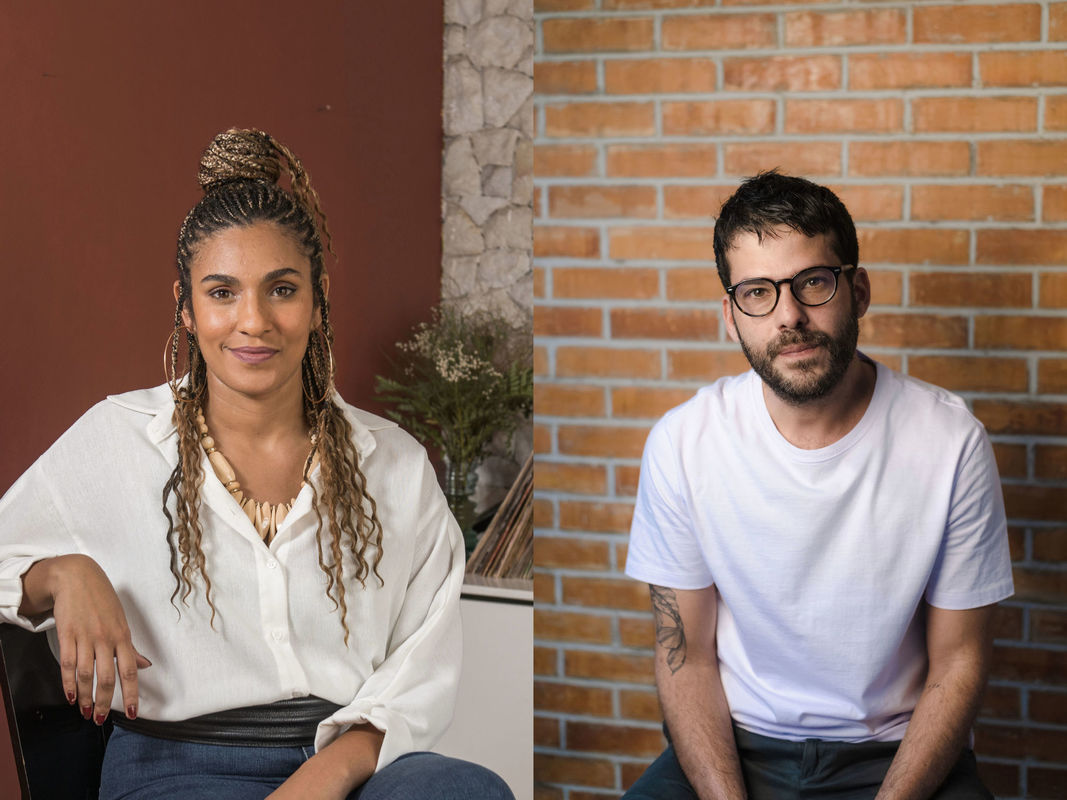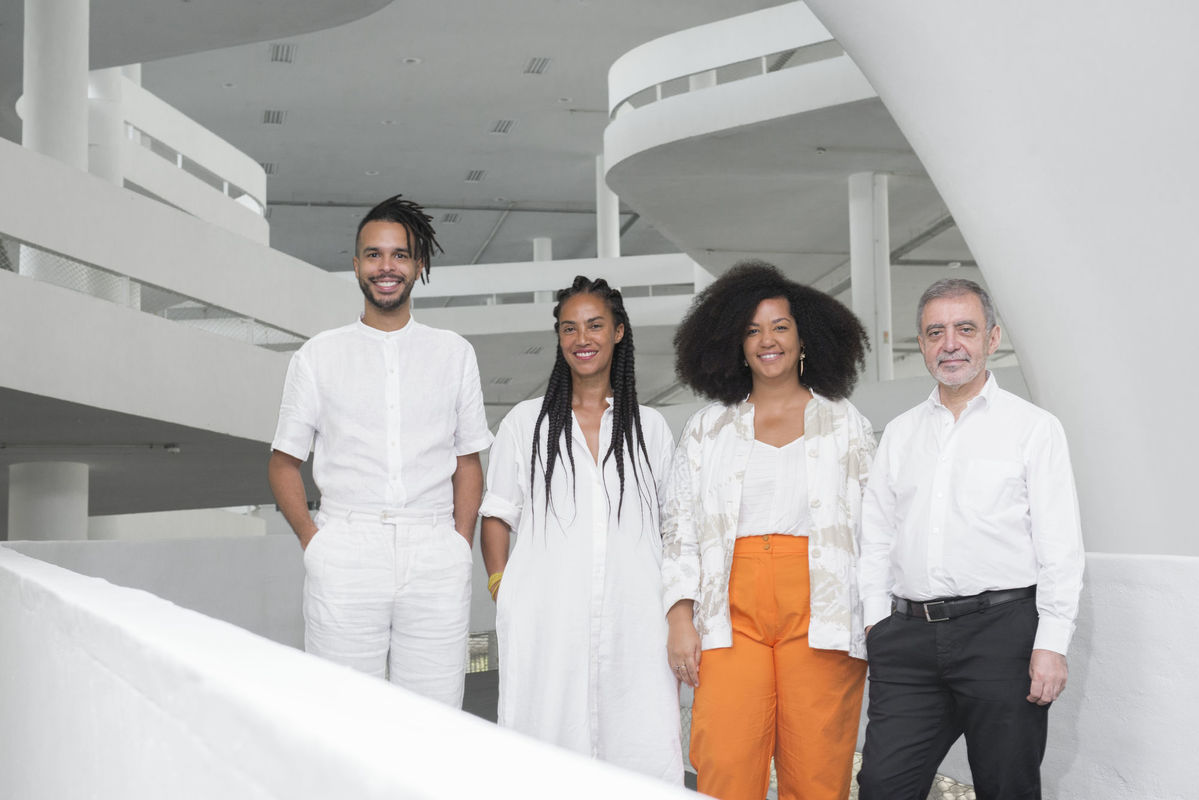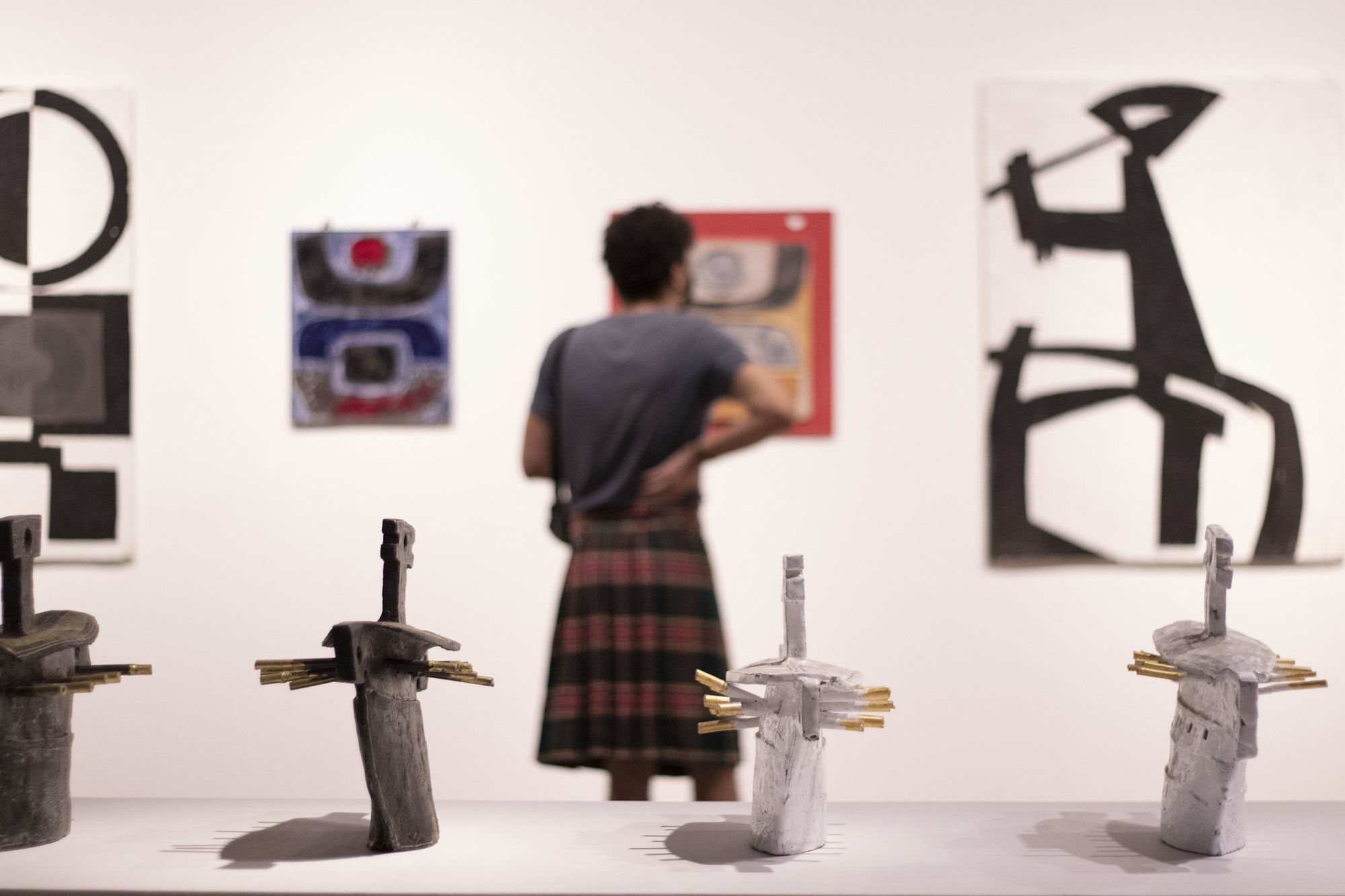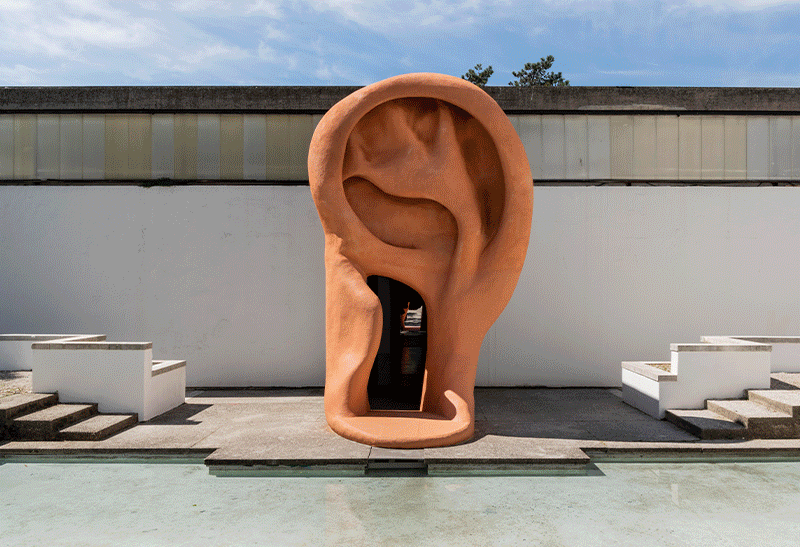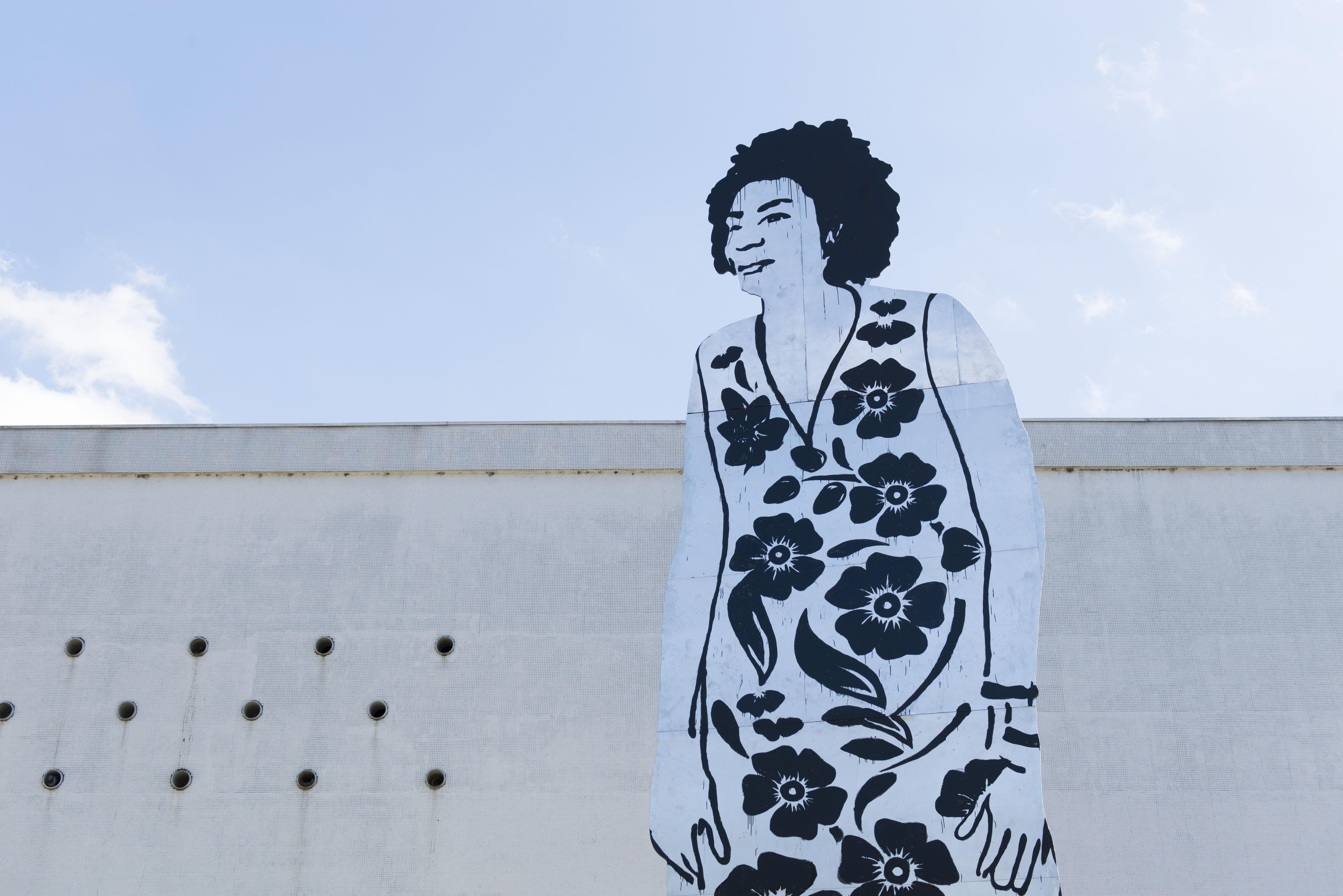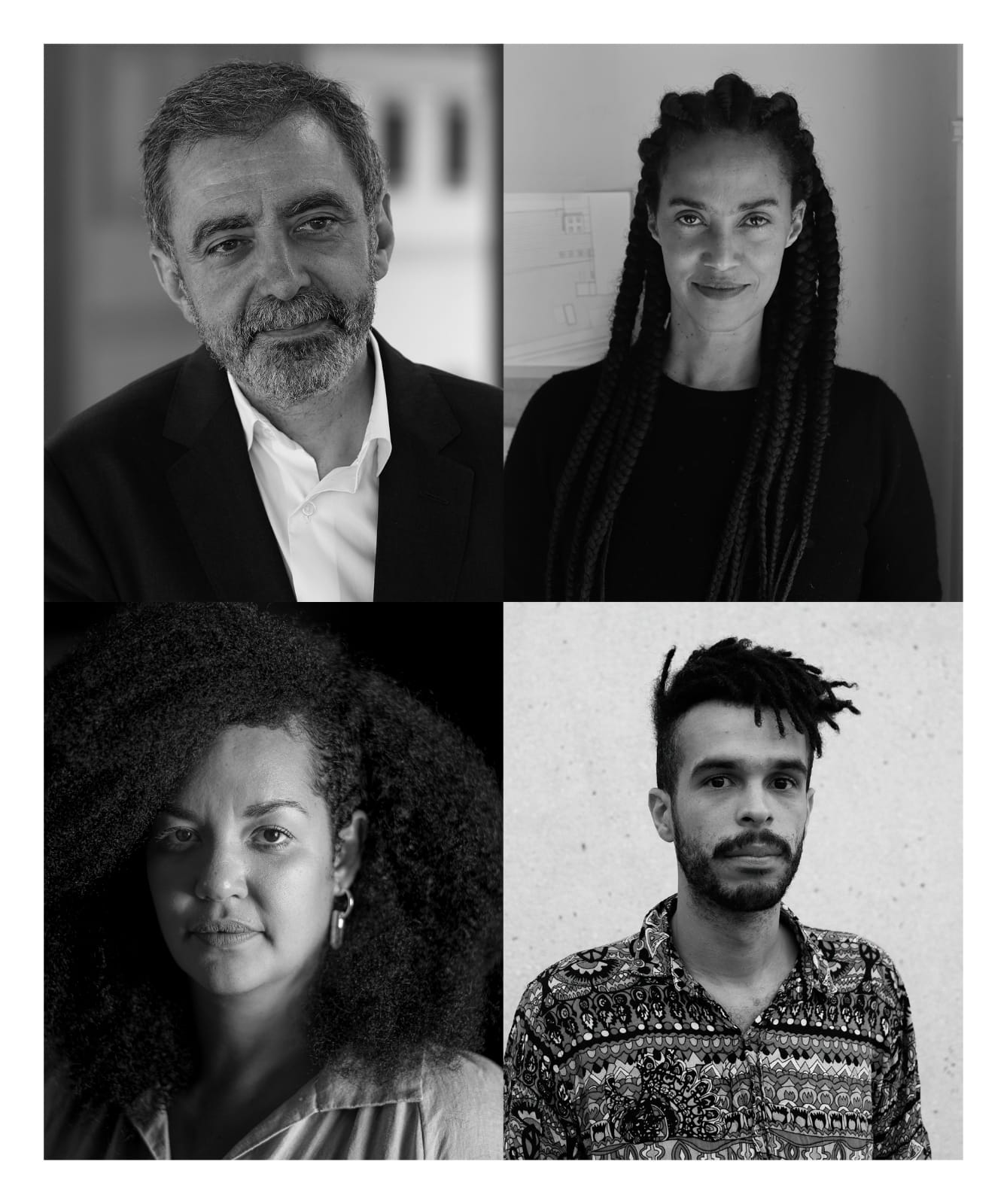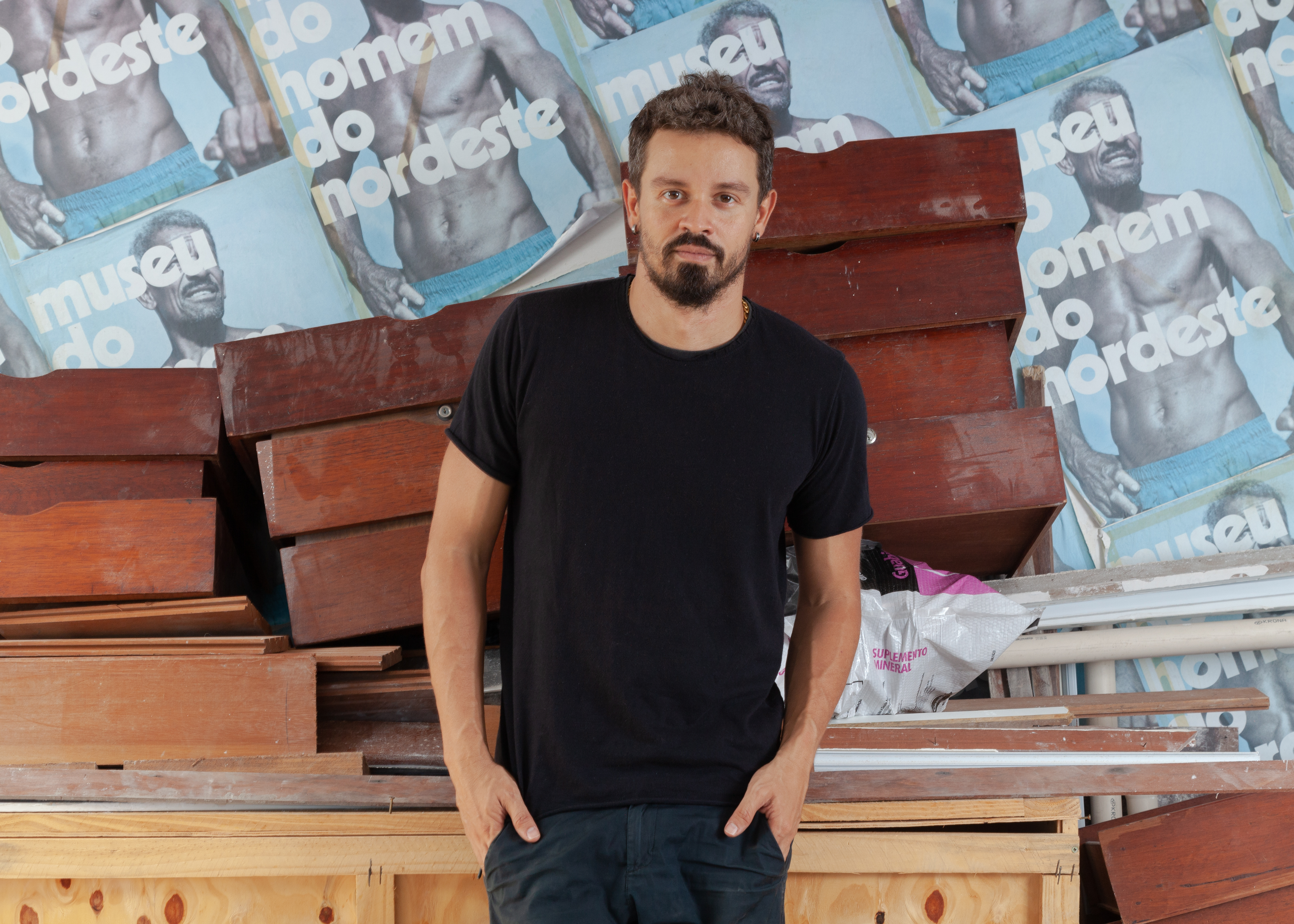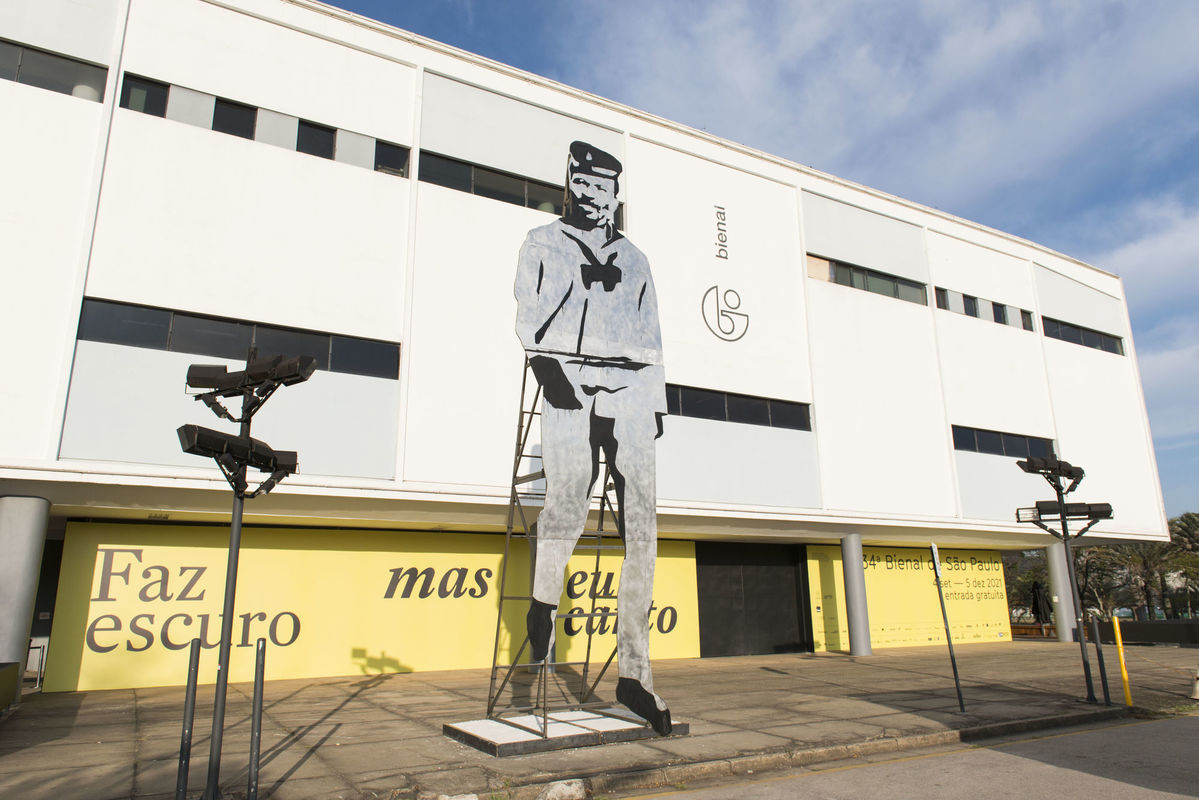![Gustavo Minas, <i>Untitled</i> [Bus Station series], 2015. Courtesy of the artist](http://imgs.fbsp.org.br/files/904905d922405d6f8e79235bacaa7694.jpeg)
São Paulo, 11 May, 2021 – The Fundação Bienal de São Paulo is now announcing its plans for occupying the Brazilian Pavilion at the 17th International Architecture Exhibition of La Biennale di Venezia. Opening to the public on May 22, 2021, the exhibition is curated by the collaborative studio Arquitetos Associados (consisting of the architects and urbanists Alexandre Brasil, André Luiz Prado, Bruno Santa Cecília, Carlos Alberto Maciel and Paula Zasnicoff) and visual designer Henrique Penha. utopias of common life begins by mapping utopias that exist on Brazilian soil, from the Guarani world vision of a Land Without Evil to contemporary times, highlighting two singular moments among them where transformative ideas either promoted or have the potential to promote significant changes in how architecture and the city can foster new alternatives for common life. The exhibition features a digital catalogue, which will be released in June 2021.
On the preview of the 17th International Architecture Exhibition of La Biennale di Venezia [Venice Biennale], on 20 May, the Fundação Bienal de São Paulo will produce, on its Youtube channel, an online event to introduce to the public the exhibition utopias of common life. The live streaming will count with the participation of the exhibition curators and talks by José Olympio da Veiga Pereira, president of the Fundação Bienal de São Paulo, and Mario Frias, Special Secretary of Culture – the department of Brazilian federal government, within the Ministry of Tourism, that organizes the exhibition jointly with the Ministry of Foreign Affairs. The event will feature live images from the Brazilian Pavilion in the Giardini, in Venice, and excerpts from the video works integrating the show. The digital preview, with approximately 30 minutes of duration, will be streamed in Portuguese only and will start at 5 pm (UTC+2) [noon GMT-3]. The public will be able to visit the exhibition from Saturday, 22 May, until Sunday, 21 November, 2021.
The curatorial project is motivated by the urgent need to think about utopias in the contemporary world. As Carlos Alberto Maciel explains: "The idea of utopia runs through various moments in the history of thinking about and producing Brazilian space, long before Thomas More coined the word in his celebrated book. In constructing this curatorial narrative, we seek to transpose and redefine the concept as a device for approaching the contemporary." Conceived before the Covid-19 pandemic, which has temporarily suspended the possibility of physical proximity in a large part of the world, the proposal gains new meanings in the current context: “It seems that the urgent need of rethinking forms of coexistence between humans and the planet in viable and socially inclusive ecological terms is amplified by the collective experience imposed by the pandemic, thus reinforcing the relevance of the themes the exhibition seeks to discuss,” the curators add.
utopias of common life consists of two sections shown in each of the two rooms that compose the Brazilian Pavilion. The smaller room will hold the section Futures of the Past, dedicated to two iconic designs of modern architecture and to the utopias that guided them, built between the end of the Estado Novo and the JK years (1946 to 1961). The large room will feature Futures of the Present, where two videos especially commissioned for the Biennale Architettura 2021 will be screened, which utopically reflect on the occupation of the contemporary metropolises.
Futures of the Past presents an interpretation, through the eyes of visual artist Luiza Baldan, of the Pedregulho Housing Complex in Rio de Janeiro’s North Zone, one of the largest social housing undertakings in the 1940s and highly innovative at its time, designed in 1947 by Affonso Eduardo Reidy. This section also presents the photographic essay by photographer Gustavo Minas about everyday life at the Brasília Bus Station Platform (1957), designed by Lucio Costa, a very unique work built at the intersection of the two axes that constitute the Pilot Plan for Brazil’s federal capital. Capping off the section are the architectural photographs by Leonardo Finotti and Joana França. More than conveying the architecture of these works, the presentation of these images also aims to reveal the way that they were occupied. The ideas that guided the designs of these two constructions are thus juxtaposed with the reality of their actual occupation.
The large room of the Brazilian Pavilion will hold the section Futures of the Present, where two brand-new videos commissioned especially for the Biennale Architettura 2021 will be screened. They both point to new ways for humans to live together and to interact with the surrounding space. The first, by directors Aiano Bemfica, Cris Araújo and Edinho Vieira, presents the possibilities for the reappropriation of buildings in the downtown districts of large metropolises. The second video, by director Amir Admoni, poetically interprets an idea for the appropriation of rivers and their banks conceived by the Metrópole Fluvial project – a 2010 proposal for the city of São Paulo by a research group of the same name at the University of São Paulo –, which questions the model of road transport adopted by the metropolis and points to new alternatives for daily life.
utopias of common life was conceived based on the theme How will we live together? proposed by architect and academician Hashim Sarkis, the curator of the 17th International Architecture Exhibition of La Biennale di Venezia. Sarkis raises the challenge of reflecting on the possibility of a new spatial contract and imagining spaces where people can, in fact, live together in the current context of political polarization and increasing economic inequality worldwide, now coupled with the challenges imposed by the pandemic. The curatorship has suggested that the architects in the show present projects that allow for the participation of other participants – artists, builders, journalists, politicians, social scientists and the general public. Sarkis thus proposes that the architects reassume their role as organizers and maintainers of a spatial contract common to society as a whole.
About the Brazilian participation at the 17th International Architecture Exhibition of La Biennale di Venezia
The Fundação Bienal de São Paulo's prerogative to realize Brazil's official representation at the 17th International Architecture Exhibition of La Biennale di Venezia is the fruit of a partnership with the Special Secretariat for Culture, which is responsible for developing the country's cultural exchange policies. "The realization of Brazilian representations in the prestigious spaces that are the Architecture and Art Exhibitions of La Biennale di Venezia is vital for promoting Brazil's cultural legacy abroad, one of the central concerns of the Special Secretariat for Culture," says Mario Frias, Special Secretary for Culture. Awarding the project to the Fundação Bienal de São Paulo is a recognition of the institution's excellent work.
The Brazilian participations at the Architecture and Art exhibitions organized by La Biennale di Venezia take place in the Brazilian Pavilion, which was built in 1964, designed by Henrique Mindlin, and is maintained by the Ministry of Foreign Affairs. For José Olympio da Veiga Pereira, president of the Fundação Bienal de São Paulo, "The national representations in Venice are privileged occasions to share the strength of contemporary Brazilian artistic and architectural production with other countries."
Resumés
Arquitetos Associados A collaborative studio dedicated to architecture and urbanism, headquartered in Belo Horizonte, Brazil. Operating with a hybrid structure, Arquitetos Associados is characterized by a dynamic project-based modus operandi, in which the design team varies with each project, thus deliberately diluting the conventional understanding of authorship. Their work for the Inhotim Contemporary Art Center (Brumadinho, Brazil) – most notably their designs for the Claudia Andujar Gallery, the Burle Marx Education Center and the Miguel Rio Branco Gallery – have garnered Arquitetos Associados national and international recognition. Their work has won awards at the 4th Bienal Internacional de Arquitetura de São Paulo (1999); at the VII BIAL – Bienal Ibero-americana de Medellín (Colombia, 2012); at the X BIAL – Bienal Ibero-americana de São Paulo (2016); and at the Prêmio APCA (Associação Paulista de Críticos de Arte), as the best project built in Brazil in 2015. Exhibitions and events they have participated in include the Daijeon Architecture Biennial, in South Korea (2010); the 2nd Bienal Iberoamericana in Pamplona, Spain (2011); Neun Neue – Nove Novos – Emerging Architects from Brazil, in Frankfurt, Germany (2013); and the exhibition Infinito Vão — 90 Years of Brazilian Architecture, at Casa da Arquitectura in Matosinhos, Portugal (2018–19).
Alexandre Brasil is an architect and urbanist (UFMG, 1997) with an MA in metallic construction (UFOP, 2006). He teaches design and constructive techniques in the Architecture and Urbanism course at UNI-BH.
André Luiz Prado is an architect and urbanist (UFMG, 1998), with a MA in theory and practice of design (EA–UFMG, 2005) and a PhD in theory, production and experience of space (2014). He is a professor of architectural design at UFMG and in the Architecture and Urbanism course at Ibmec, where he is also a coordinator. Prado is the author of the book Ao fim da cidade (Editora UFMG, 2016).
Bruno Santa Cecília is an architect and urbanist, with an MA in theory and practice of design and a PhD in the theory, production and experience of space (EA–UFMG, 2000, 2004 and 2016). He is a professor of architectural design in the Architecture and Urbanism courses at FUMEC and at EA–UFMG. He is the author of the books Brazil: Architectural Guide (DOM Publishers, 2013) and Éolo Maia: complexidade e contradição na arquitetura brasileira (Editora UFMG, 2016).
Carlos Alberto Maciel is an architect and urbanist, with an MA in theory and practice of design and a PhD in the theory, production and experience of space (EA–UFMG, 1997, 2000 and 2015). He teaches architectural design as part of the Architecture and Urbanism course at EA–UFMG. He is the author of the books Territórios da Universidade (Editora UFMG, 2012) and of the collection Arquitetura como Infraestrutura (3 volumes, Editora Miguilim, 2019).
Paula Zasnicoff Cardoso is an architect and urbanist (FAU–USP, 2000) with an MA in theory and practice of architectural design (EA–UFMG, 2007). She taught drawing and design as part of the Architecture and Urbanism course at Escola da Cidade, São Paulo, and currently teaches architectural design as part of the Architecture and Urbanism course at UNI-BH.
Henrique Penha Holds a BA in social communication (UFMG, 1995) and an MA in communication from Boston University (1998). A leader in the discipline of design in the technology industry for two decades, he was a director of design at Apple, in California, where he has joined product designer Jony Ive’s team and led the creation of multiple products. He has led several design projects at Oculus VR (Facebook), Lyft, Android (Google) and Skype, having worked in Boston, London and San Francisco. Penha is also a photographer.
Brazilian Pavilion at the 17th International Architecture Exhibition – La Biennale di Venezia
Commissioner: José Olympio da Veiga Pereira, president of the Fundação Bienal de São Paulo
Curators: Arquitetos Associados (Alexandre Brasil, André Luiz Prado, Bruno Santa Cecília, Carlos Alberto Maciel and Paula Zasnicoff) and Henrique Penha.
Exhibitors: Aiano Bemfica, Cris Araújo, Edinho Vieira, Alexandre Delijaicov | Grupo de Pesquisa Metrópole Fluvial – Faculdade de Arquitetura e Urbanismo da Universidade de São Paulo, Amir Admoni, Gustavo Minas, Joana França, Leonardo Finotti, Luiza Baldan
Title of the exhibition: utopias of common life
Place: Brazilian Pavilion
Address: Giardini Napoleonici di Castello, Padiglione Brasile, 30122 Venice, Italy
Date: May 22 through November 21, 2021
Preview for press and professionals: May 19 to 21, 2021
Live with curators and organizers: 20 May, Thursday, at 5 pm (UTC+2) [noon GMT-3] on https://www.youtube.com/bienalsp. With the Brazilian participation curators and representatives of the Fundação Bienal de São Paulo the Special Secretary of Culture (Ministry of Tourism – Federal Government)

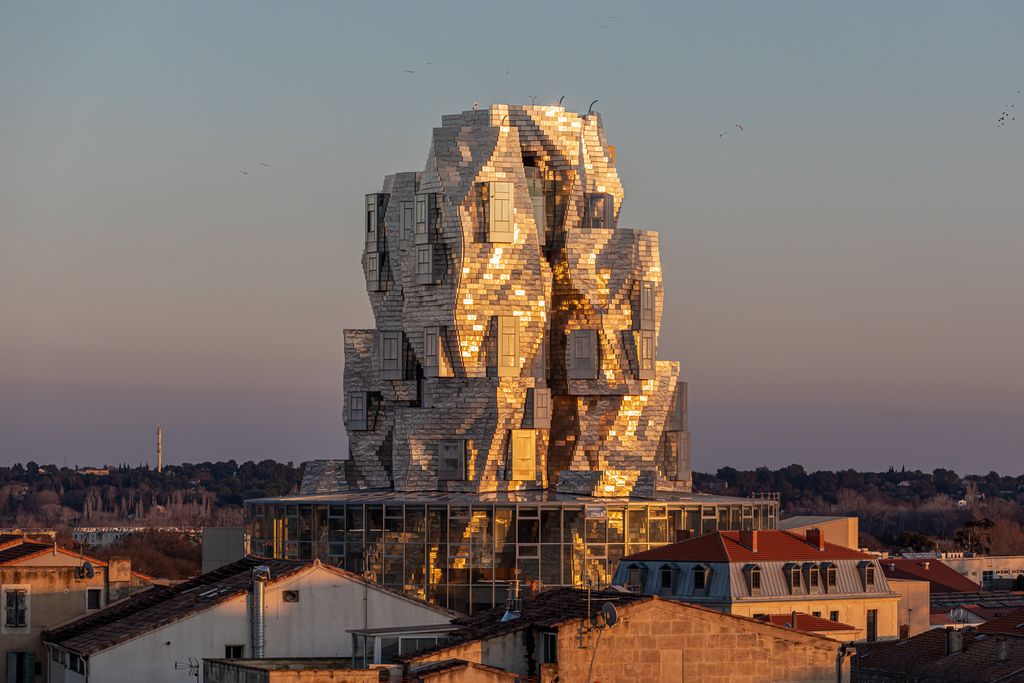

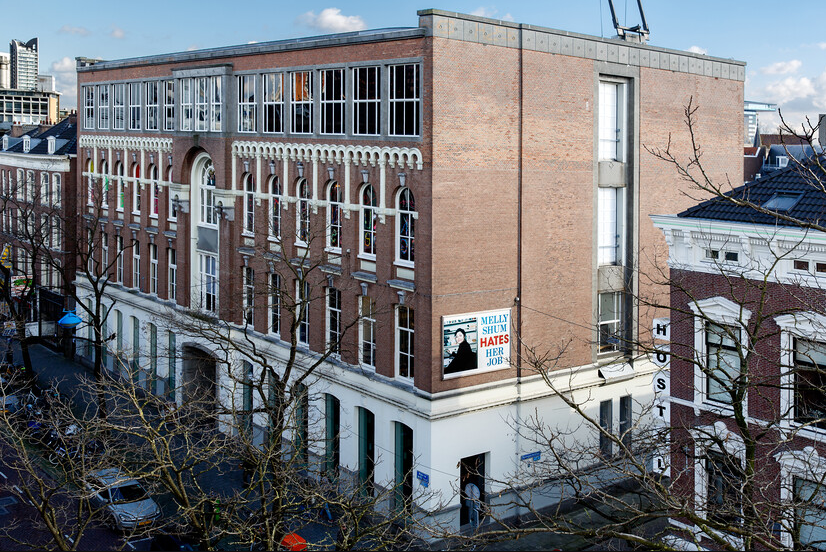
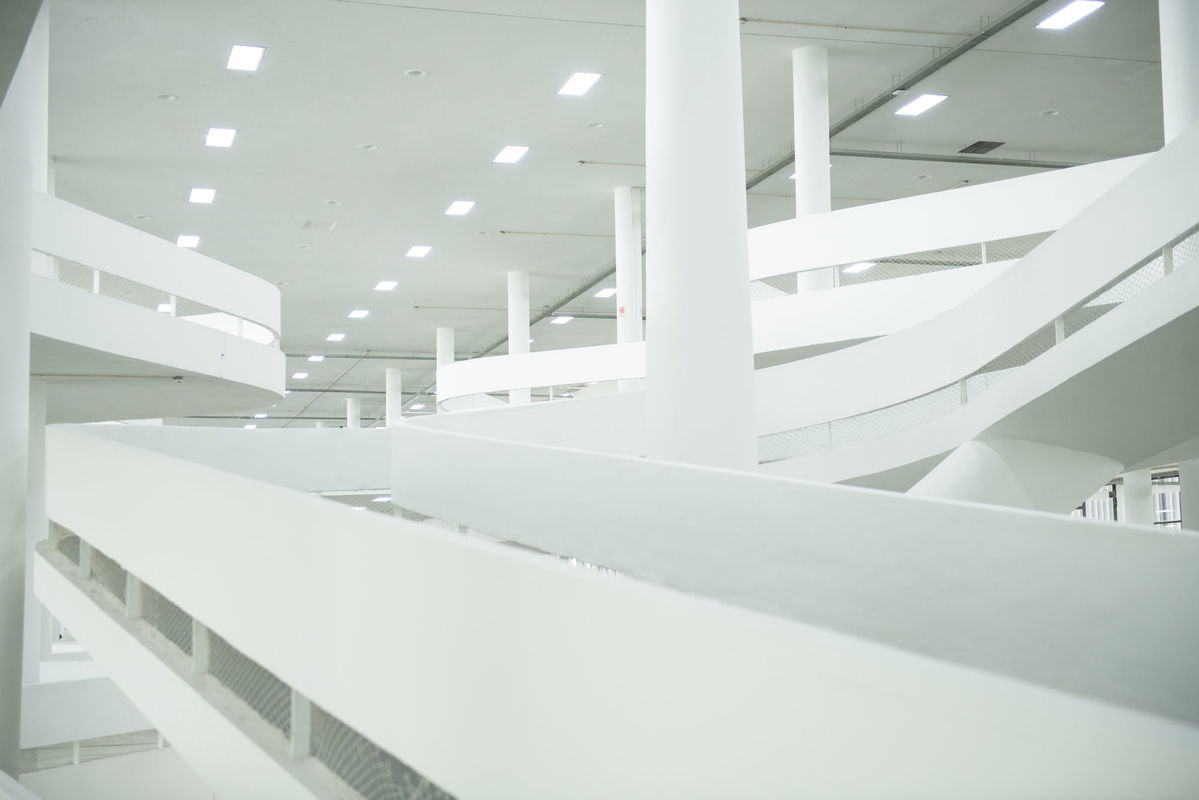
![View of the sculpture of the series Corte Seco [Dry cut] (2021), by Paulo Nazareth during the 34th Bienal de São Paulo. Commissioned by Fundação Bienal de São Paulo for the 34th Bienal de São Paulo](http://imgs.fbsp.org.br/files/81b3a05327e8559c64fc5cda09f3e1f8.jpg)
